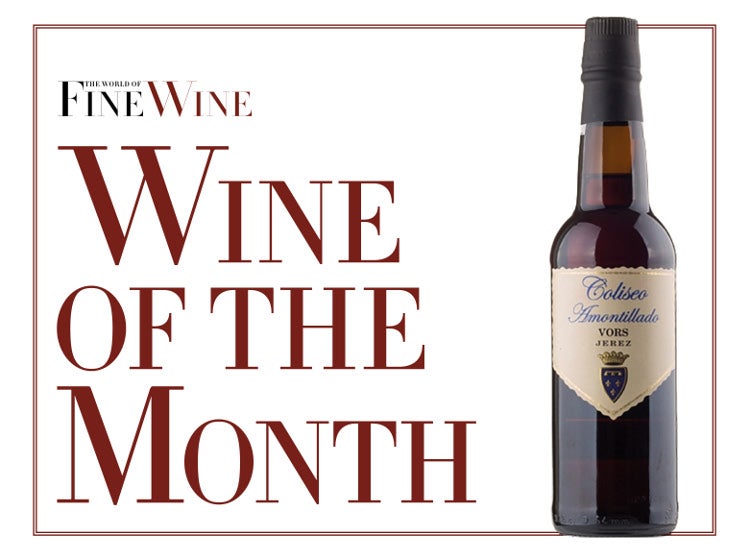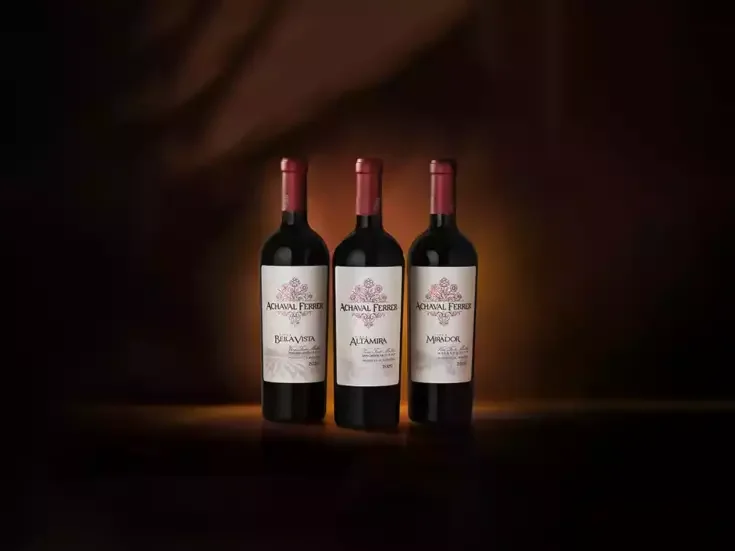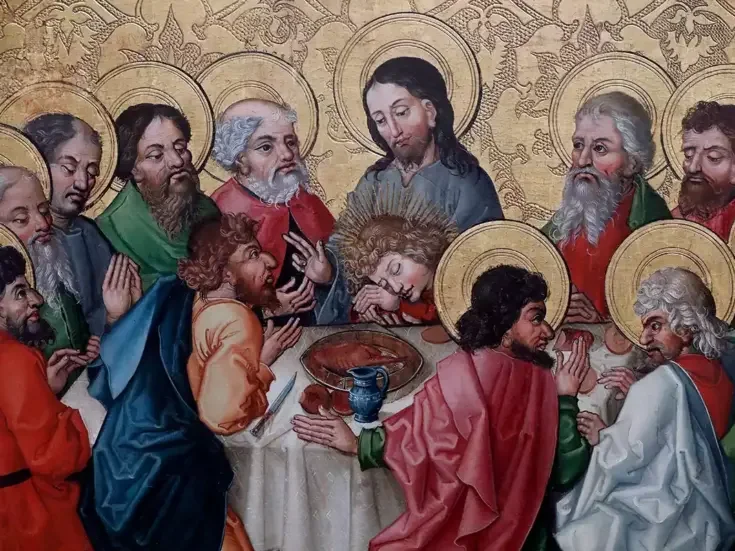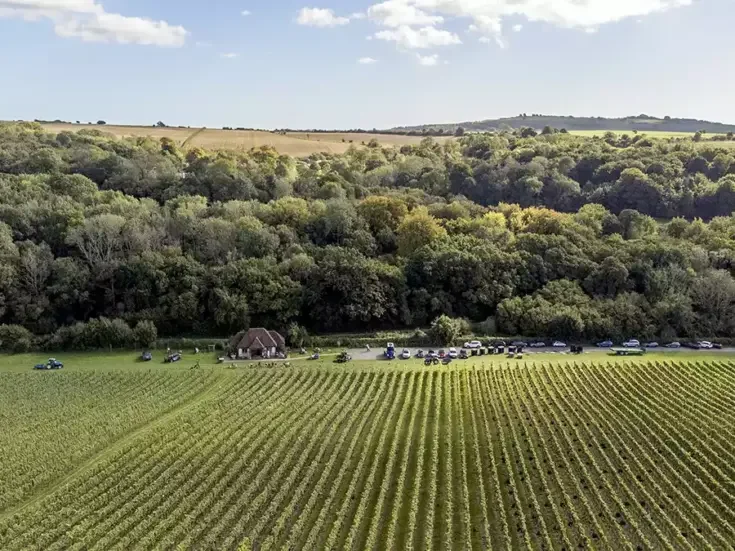
I could begin by expanding on my own conviction that this gathering of beautiful Amontillados was among the dozen or so most delicious, enlightening, and rewarding tastings I have ever attended. But I would be afraid that the prudent reader might not give much credence to the opinion of a Spaniard who is modestly known as some kind of Sherry ambassador, who writes articles and books on the subject, and who is, moreover, personally involved in the production of some of the wines (none of which was included in this tasting, to avoid any accusation of conflict of interest). Even so, for what it may be worth, I am now more certain than ever that Amontillado Sherry is among the top wines of the world.
The case for greatness
In support of my admittedly biased opinion, I would cite a noteworthy historical fact. In the middle of the 19th century, Edgar Allan Poe, that tormented Bostonian writer, wrote a short story whose apparent subject matter (the real subject matter being revenge, resentment, and horror) is the common passion of two Europeans living in Italy. One of them is probably French and the other Italian-neither is Spanish in any case-and the object of their interest is a cask of Amontillado. A mere coincidence? A wine chosen at random? I don’t think so. Had the story been set in Andalusia, or involved any Spanish characters, or been written by a Spaniard, one might suppose that he was adding local flavor. But none of this applies. Is it not more reasonable, therefore, to argue that the choice of Amontillado as an irresistible lure was due rather to its contemporary reputation as one of the most distinguished wines in the world?
Lest there be any skeptical reader who is still not convinced, let us add another piece of evidence. In Isak Dinesen’s Babette’s Feast-the poignant portrayal of 19th-century Lutheran austerity, relieved by a brief but glorious episode of gastronomic delight that melts the hardest hearts-the heroine chooses three wines with the necessary redemptive power: Champagne, Burgundy, and, yes, Amontillado. Again, surely no coincidence.
Contemporary neglect
It goes without saying that any wine region or wine style must also be considered in its current context, and Amontillado cannot be rated according only to its historical reputation. Nowadays, alas, it is all too clear that there is a general lack of interest in these great wines, and sales of real Amontillado are shamefully small worldwide. There is no real market for these beauties, to the point where some of the wines in this tasting are being bottled in pathetically small volumes.
We could spend hours speculating on the reasons for this neglect. But the main one, it seems to me, is a general lack of imagination or discovery instinct among wine lovers. It is now all too clear that we human beings are-collectively, as a species-a plague on the planet. But there is some sort of inexorable psychological law that we all tend to exclude ourselves from the verdict of global inanity. Descartes cunningly pointed out that nobody seems to desire more intelligence for himself-it is always others who seem to be more in need of it. We wine lovers are not above that rule. We may consent to (and even enjoy) being seen as somewhat extravagant, sometimes excessive, probably a tad too hedonistic, but we still tend to see ourselves as smart, with an eye for the good things in life. In my humble opinion, the scant regard we show for such astonishing wines as these Amontillados should rob us of any illusion that we wine lovers are an honorable exception to the rule of human inanity.
The evidence of the wines themselves
The cultural evidence advanced earlier in this introduction cannot prove-and may merely support-my contention that Amontillado is among the world’s greatest wines. But I hope that it may at least serve to open the mind of the reader to this possibility. After that, it is the wines themselves that should do the talking, and the bottles opened for this tasting ought to reveal a verdict that is inevitably individual and personal.
For me, there can be few wines as complex, refined, and (literally) stunning as the wonderful Amontillados that Andrew Jefford, Richard Mayson, and I were privileged to taste in London in early 2013. Even the first flight of six wines-all of them modest in price but generous in soul- was remarkable: Alvear’s Carlos VII, Lustau’s Botaina, Real Tesoro’s Del Príncipe, Valdespino’s Tío Diego, Williams & Humbert’s Collection, and Pérez Barquero’s Gran Barquero. Six extraordinary wines that also happen to be ridiculously affordable by any standard. So much so, in fact, that in hindsight I now feel quite guilty for not having rated some of them higher-closer to the 18.5 or 19 points that are reserved in the WFW scheme of things for “outstanding wine of great beauty and articulacy” or “great wine of spellbinding beauty and resonance, leaving the drinker with a sense of wonder” (to borrow Andrew Jefford’s admirable prose). If I shied away from those higher scores, I was likely influenced by the relative youth of those wines and my awareness of the overwhelming greatness of some of the wines that were still to come.
On complexity
Amontillado is a complex wine from many different perspectives. The most obvious one, perhaps, is its fascinating aromatic profile, with successive waves of aromas of seemingly endless persistence and variety. It is no old wives’ tale that the Jerezanos who could afford to do so used to moisten their handkerchief with a few drops of old Amontillado so that they could sniff it throughout the day. Amontillado is also complex for a number of reasons related to the making of the wine, starting with the process itself, of course, and more specifically the balancing of biological and oxidative aging, as well as the grape variety, the region of origin, and even the city where the wine is aged.
Was Amontillado born in Montilla or somewhere else in Andalusia? Its etymology is significant. As a style of wine, it seems reasonable to suppose that it was originally produced and sold in Montilla, since the Spanish word amontillado means “in the style of Montilla.” Or maybe it was the way the finest wines from Montilla developed after the journey, lasting several days, across Andalusia from Montilla to Cádiz, in casks transported on carts for shipping overseas… But for this same reason, the name, and probably the wine itself, was born somewhere else, probably in Jerez; this was a kind of wine identified as similar to that from Montilla.
Amontillado is, or at least should be, a dry wine; please don’t fall for any of those abhorrent hybrid creatures known as medium-dry or medium Amontillado, a type of cheap, mass-market wine of which you will never find a single cask in any self-respecting bodega, whose multifaceted profile comes from the combination of biological aging (under flor) and oxidative aging. In other words, every Amontillado started as a Fino or Manzanilla, before entering an oxidative regime for a few (or not so few) more years. This can happen either in Montilla-Moriles (with the Pedro Ximénez grape variety) or in the Sherry district (with Palomino Fino).
Already the number of variables is remarkable, even if we choose (and why should we?) to ignore the vineyard where the grapes were grown-a factor that has been neglected for the past few decades but whose importance must surely be recognized more widely sooner rather than later. Tasted side by side, Amontillados from Montilla are almost invariably fuller and richer on the palate than those from Jerez, due to the Pedro Ximénez used in the former. But even within the Sherry district, there ought to be notable differences between Amontillados Jerezanos and Amontillados Sanluqueños-the former being more powerful and robust, the latter lighter and sharper. This generally holds true-unless a given wine is aged in Jerez but made from, and refreshed with, Manzanilla, in which case the matter gets even more complicated, because counterintuitively the resulting wine is even sharper than one raised in Sanlúcar: knife-like.
The final product will be different, even markedly so, if instead of aging the wine to its maximum biological age we remove it from under flor after only a few years and let it start its oxidative maturation then. Thus, two Amontillados of the same origin and age-say 15 years- will taste very different if one has spent five years under flor and ten oxidizing, and the other has spent ten years under flor and five oxidizing.
Another relevant variable is the transition between those two aging phases. In principle, the less intrusive and slower option is to allow the veil of flor to disappear naturally, as a consequence of the consumption of nutrients, without topping up with fresh Fino or Manzanilla. Cutting the flow of active nutrients weakens the flor until it disappears, allowing the wine to enter into contact with air, so that it gradually oxidizes and gains in alcoholic strength. The alternative is to kill the flor abruptly by adding alcohol until the Fino or Manzanilla reaches 18% ABV, at which level the yeasts cannot survive. The result is a faster process of oxidation, which initially yields a less harmonious wine, though only for its first few years of aging.
Epilogue: A draught from paradise!
To conclude, let us revisit our American author Edgar Allan Poe, or more graphically, the Roger Corman film Tales of Terror (1962), where the second of the three episodes combines two originally distinct Poe stories, “The Cask of Amontillado” and “The Black Cat.” At one point, the victim, a world-famous wine taster, Fortunato Luchresi (played by Vincent Price), drinks freely of an old Amontillado and utters in ecstasy, “A draught from paradise!” His murderer, Montresor Herringbone (played by Peter Lorre), cuckolded by Luchresi, replies, “That it is, that it is… Let me fill your glass.” As I take (yet) another sip of the old Amontillado from Sanlúcar that has been helping me throughout this introduction, I can fully understand why Herringbone offered this wine as the temptation, and why Luchresi succumbed. My toast to them would be, “Amen, brothers!”
Amontillado Coliseo VORS, Valdespino ranked in Jesús Barquín’s, Andrew Jefford’s and Richard Mayson’s top wines at this tasting, and is our wine of the month.
Amontillado Coliseo VORS, Valdespino
JB | Deep mahogany, with greenish hues. The nose is tight, but somewhere in the background seem to rest all the aromas that ever existed. Extremely old and concentrated. The palate is sharp as a knife-in fact, this sharpness is all that remains of its biological aging, together with the absence of any VA. Powerful, impressive, colossal, poignant, uncompromising. | 19.5
AJ | Deep walnut in color: another of those Oloroso-like Amontillados. As with some of the other wines of that sort, this also has what is (for me) a drearily casky, hessian aroma, like smelling essence of bodega but with the vineyard squeezed out. Then… Whack! Crikey! Strewth! It’s hugely intense, I mean, so intense that it puts all the other “intense” references into the shade; it powers on to the tongue, and drills down into it, and flares off apricot flames and peach gases and out comes a salty seeping mass of flavor that is more the taste of time itself than anything else. Respect: It’s awesome. But the aromas honestly lack freshness and lift, and it all ends up in the bitter zone where wine and medicine meet. I feel that it is probably a better blending component now than sipping substance-except if you want to gauge the extent of the changes that time can bring to wine in cask. Hard to score, obviously. | 16.5
RM | Mid-deep amber, with an olive green rim; pungent and aromatic, with power and almost balsamic concentration evident on the nose; similarly powerful on the palate, a black hole of concentration and intensity suggesting that this is a very old wine, slight casky/rancio character on the finish adds to the overall complexity. This leaves me with a sense of wonder (and respect), so… | 19







